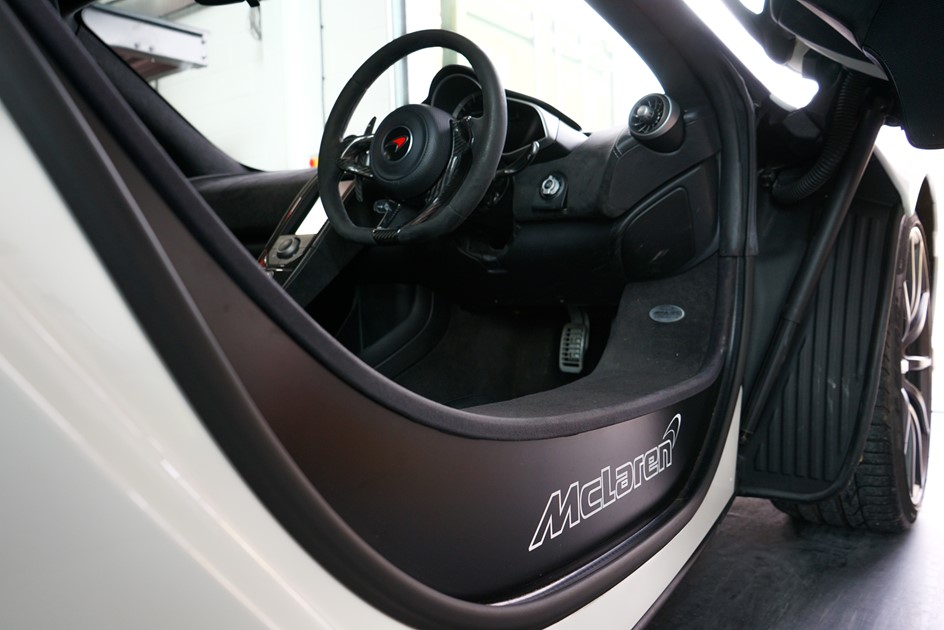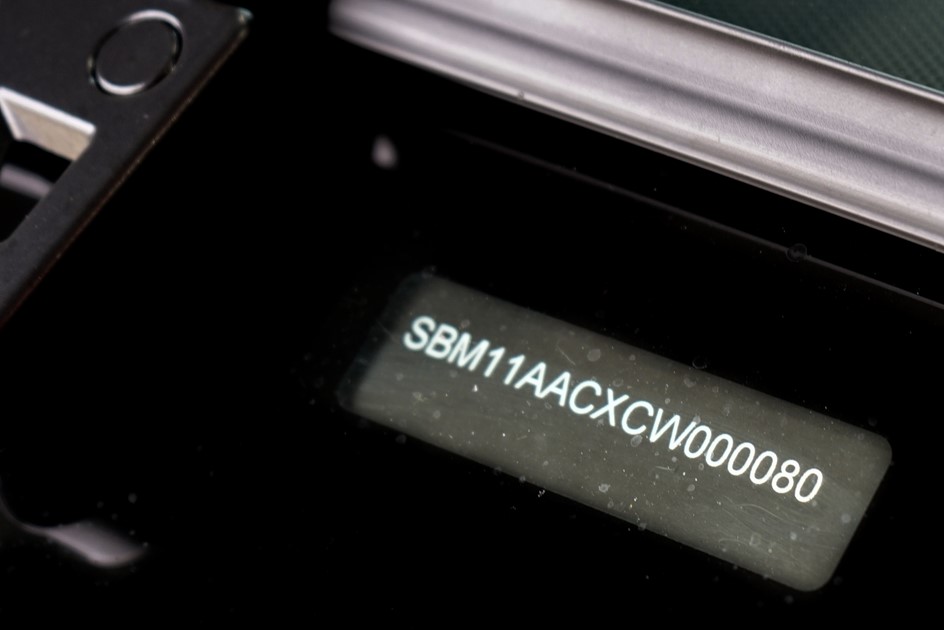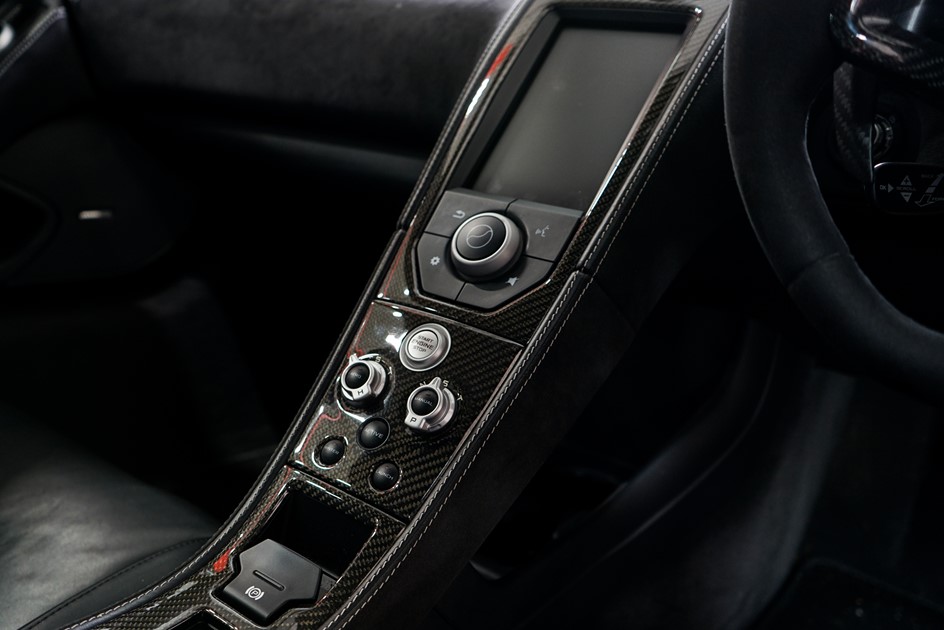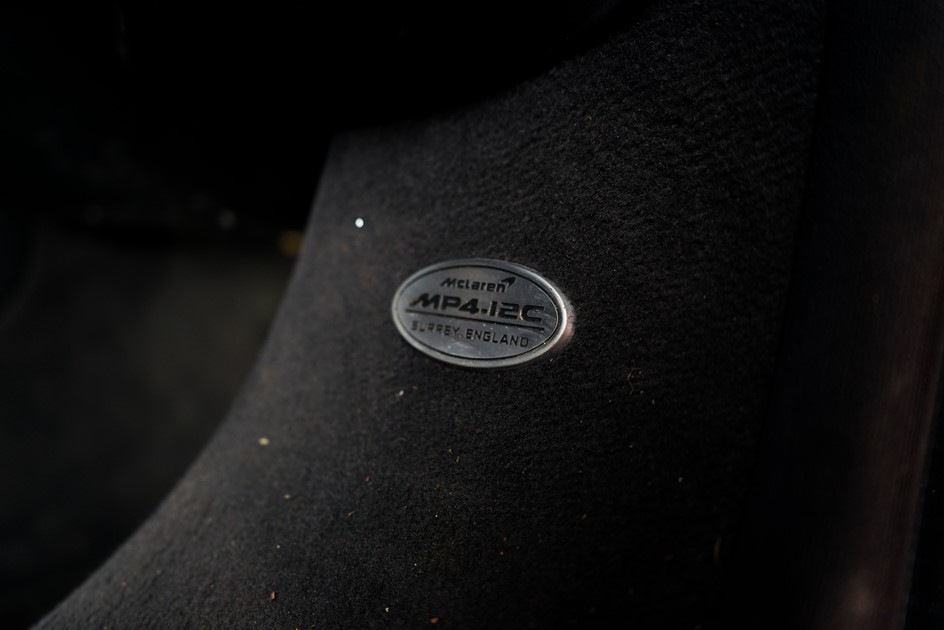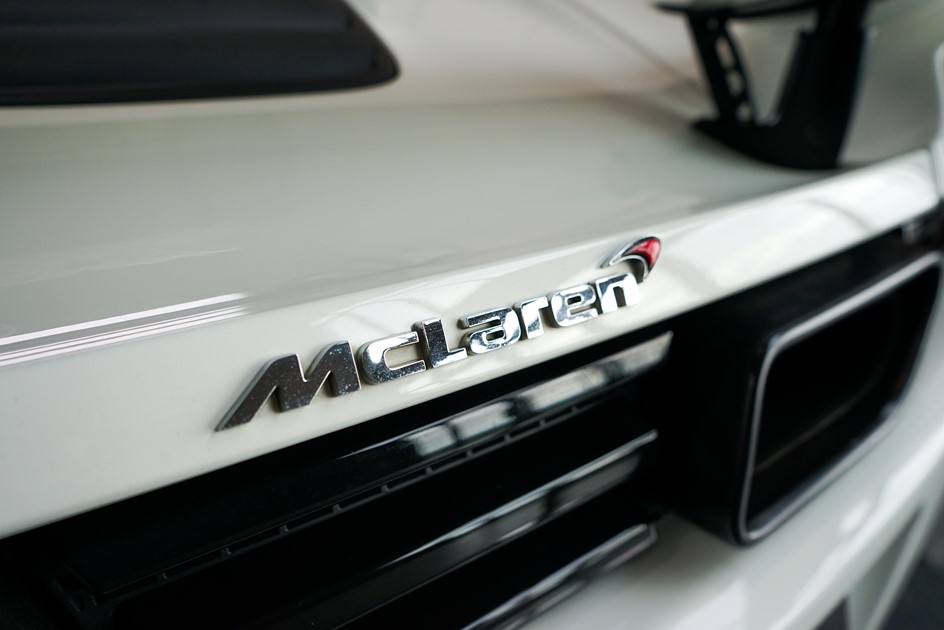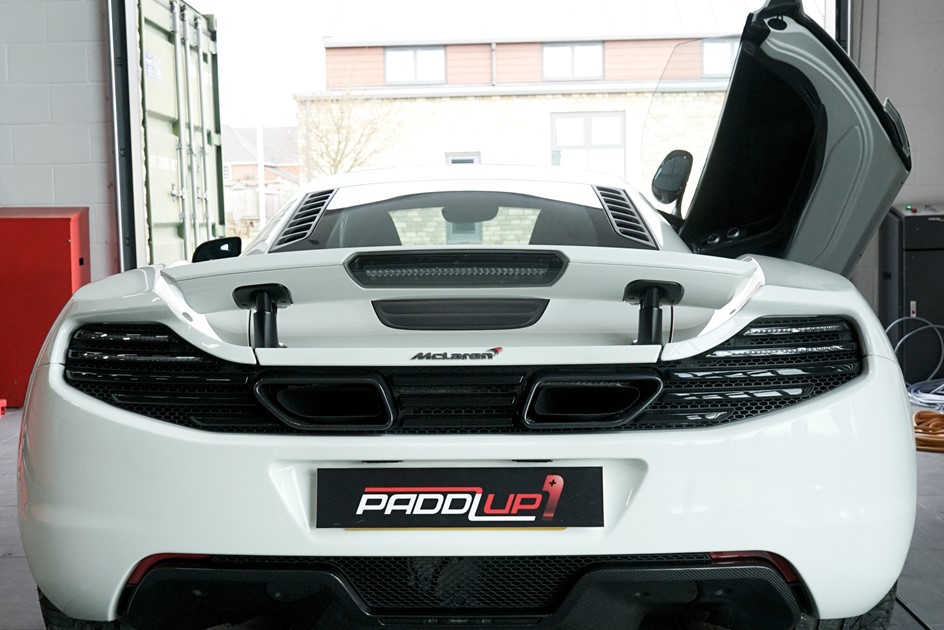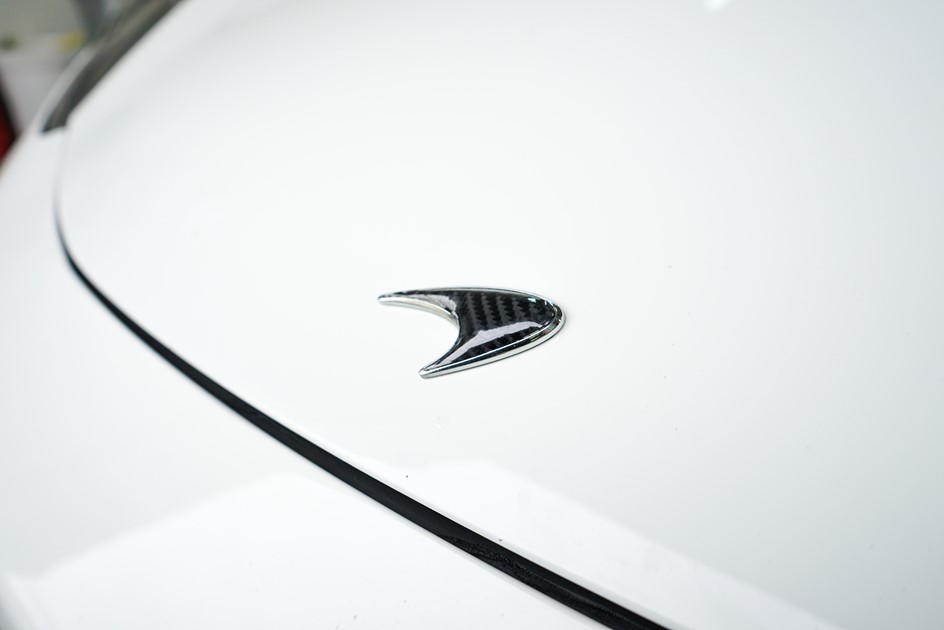McLaren's MP4-12C
Passing through the Paddlup Rooms recently from one of our clients was a truly pioneering McLaren: Year: September 2011 Capacity: 3.8l Twin Turbo M838T Gearbox: 7-speed double-clutch seamless shift Exterior: White Interior: Black Leather Options: Stealth Pack, Stealth Lightweight Wheels, Carbon Front Splitter, Carbon Mirrors, Carbon Rear Diffuser
In 2011, before the opening of the adjacent Foster & Partners designed MPC (McLaren Production Centre), detail and acronym obsessive Ron Dennis launched McLaren Automotive with a production hall for the MP4-12C located at the MTC (McLaren Technology Centre). Situated on level 0, next to the McLaren Racing workshops and behind the ‘atrium’ turntable, the hall’s glass was suitably frosted for maintaining secrecy from any ‘boulevard’ visitors, whilst, at the same time, the Formula 1 chassis build remained on complete view to them.
Here was the birth of a new global automotive brand onto the world stage with learnings from previous forays from the McLaren F1 of the early 90’s and just prior the Mercedes-Benz SLR McLaren, the MP4-12C was aimed squarely at the technology-obsessive supercar buyer.
Seen here is one of these early cars – chassis eighty registered on 1 September 2011 and as such, would have been subjected to repeat meticulous attention to detail and obsession from each engineering team, each supplier, quality control and be in no doubt, Ron Dennis himself.
Finished in white with aluminium and composite body panels, the carbon fibre exterior touches such as the engine cover and optional front splitter, mirrors and rear diffuser give a nod to what lies beneath in the form of the carbon fibre MonoCell, which in 2011 gave this car a unique architecture for its class and price point and since has gone on to grace all McLaren road cars even if, such as with the McLaren P1, additional roof structure was added.
The 12C is ageing well, thanks in part to a timeless design approach from Frank Stephenson who oversaw design flourishes such as cover diffusers on the headlight LEDs so it appears as one light and not individually viewable LEDs fashionable at the time with some competitors. As a result, today the 12C is handsome, well proportioned, and not out of place in any setting with a visual appeal that has grown in time. In addition, these early cars had a touch exterior sensor to open the doors, actuated by stroking and later replaced by a less streamlined button. The timeless theme is continued in the interior with McLaren refraining from adding numerous controls to the steering wheel like some of its contemporaries.
The UK Ricardo-manufactured twin-turbo flat-crank V8 in 2011 originally achieved an output of 592bhp, although subsequent upgrades which were also fitted to existing cars such as this one pushed this to 616bhp at 7,500 rpm and led Autocar to declare “the 12C is ferociously, apocalyptically quick”.
The suspension design is another assemblage that has stood the test of time, featuring oil sprung double wishbones and a set of linked hydraulic dampers where internal pressure can be adjusted either by the selected driving mode or ‘decoupled’ from the mode and damper rates adjusted independently. The remarkable design gives the 12C agile performance handling and stability, yet the heralded ‘ride of a limousine'.
Overall, the McLaren MP4-12C is maturing nicely and will always be a key part of McLaren road car history. The best examples of early production MP4-12C as we see here or late production 12C will command an interest and premium for the collector or a usable modern classic for the enthusiast owner, as it will always be, no matter what comes next, the very first of the McLaren Automotive era.


